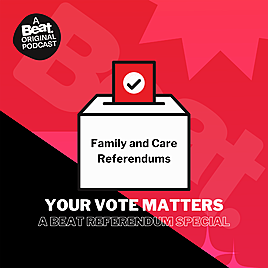
What an Iowa Farmer Fears About the Trade War
24 April - 29 minsIn the increasingly bitter trade war between the United States and China, perhaps nobody has more at stake than America’s soybean farmers, whose crop has become the country’s single biggest export to China.
Michael Barbaro speaks to an Iowa farmer who helped build that $13 billion market, and asks her what President Trump’s sky-high tariffs mean for her and for tens of thousands of other American farmers.
Guest: April Hemmes, a soybean farmer in Iowa.
Background reading:
Soybean producers warned that farms could go under after the Trump administration hit China with tariffs of 145 percent.China has long relied on the U.S. for soybeans. But with new steep tariffs, it is likely to look ev...

Trump Says They’re Foreign Gang Members. Are They?
In recent weeks, the Trump administration has deported hundreds of Venezuelan migrants by quickly labeling them as gang members and foreign enemies, and boarding them on planes to El Salvador. It’s sidestepping their rights to a court hearing where anyone might be able to scrutinize the claims against them. As a result, very little has been known about who these men are, or how they were targeted by immigration officials. Until now. Julie Turkewitz, the Andes bureau chief for The New York Times, explains who was actually on those planes, and discusses the secretive process that led to their deportations.
29 mins
23 April Finished

How Pope Francis Changed the Catholic Church
Church bells rang out across the world on Monday to mark the death of Pope Francis at the age of 88. Jason Horowitz, the Rome bureau chief at The New York Times, discusses the pope’s push to change the church, his bitter clashes with traditionalists, and what his papacy meant to the world’s 1.4 billion Catholics.
39 mins
22 April Finished

Is the Era of Student Loan Forgiveness Officially Over?
Across the country, millions of Americans with unpaid student loans are discovering that years of patience and forgiveness from the U.S. government have officially come to an end. Stacy Cowley, a business reporter for The Times, explains what is behind the change of heart, sets out its financial consequences for borrowers — and discusses the larger reckoning that it may cause about how Americans pay for higher education.
26 mins
21 April Finished

The Sunday Read: ‘How Analytics Marginalized Baseball’s Superstar Pitchers’
One day at Wrigley Field in Chicago last May, Paul Skenes was pitching for the Pittsburgh Pirates, carving out a small piece of baseball history in his second big-league game. He struck out the first seven batters he faced. By the end of the fifth inning, he had increased his strikeout total to 10. More impressive, he hadn’t allowed a hit. Over the past two decades, analysts have identified a treasure trove of competitive advantages for teams willing to question baseball’s established practices. Perhaps the most significant of competitive advantages was hidden in plain sight, at the center of the diamond. Starting pitchers were traditionally taught to conserve strength so they could last deep into games. Throwing 300 innings in a season was once commonplace; in 1969 alone, nine pitchers did it. But at some definable point in each game, the data came to reveal, a relief pitcher becomes a more effective option than the starter, even if that starter is Sandy Koufax or Tom Seaver — or Paul Skenes.
31 mins
20 April Finished






















